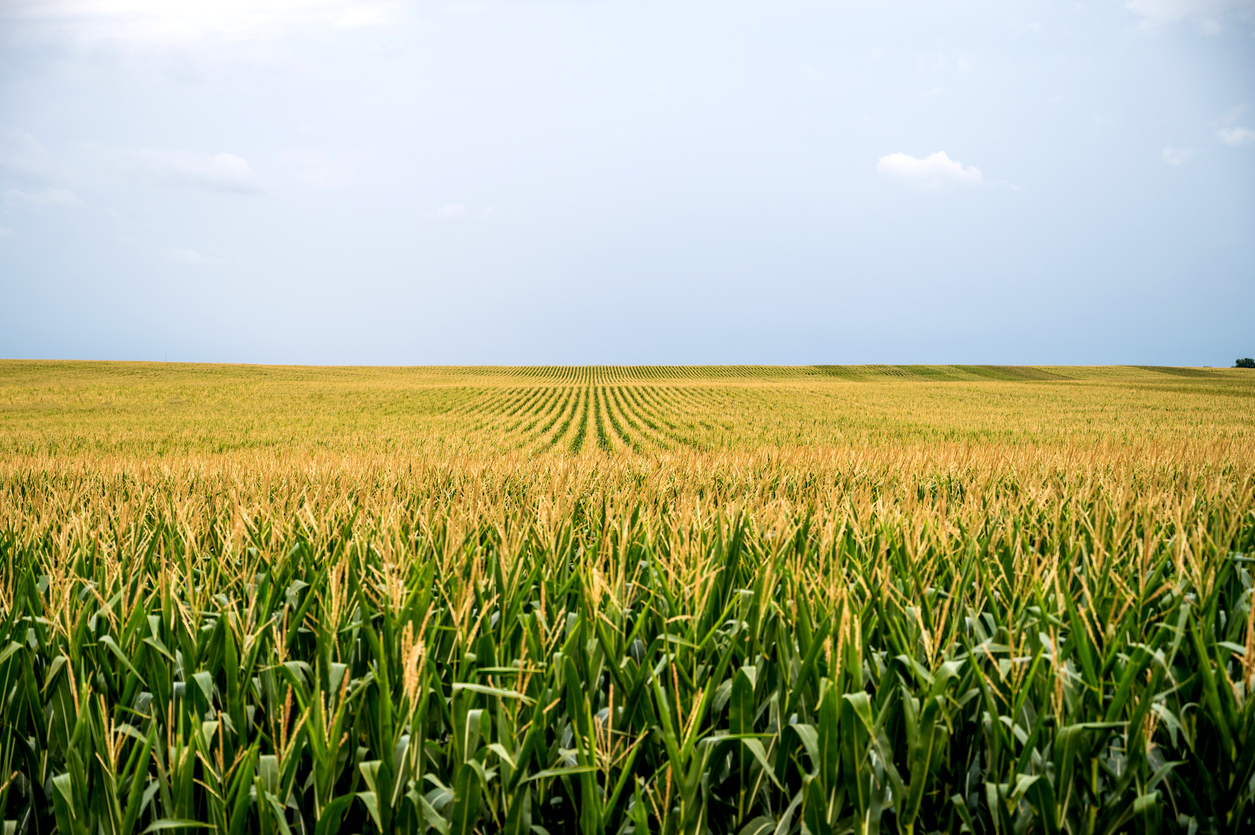Corn Planting & Soil Temperatures
Planting corn in cold wet soils results in reduced yields. When the soil temperature reaches 50o F and is rising (with ideal moisture), that is the optimal time to plant corn. Regularly check soil temperatures 4-inches deep just after dawn with a thermometer. To avoid problems, check the weather forecast and soil temperatures on fields to be planted. Wet soils or fields with more crop residue and/or poor drainage tend to be wetter and colder. Water keeps the soil cold requiring 10X more energy than air to warm up soil. Improving drainage, reducing soil compaction, and improving organic matter (from live roots) allow soils to dry out faster. A good live cover crop like cereal rye may transpire 0.2 to 0.3 inch of water per day, drying out and warming the soil.
Early during the corn planting season, plant corn varieties with a high cold tolerance. Many corn varieties vary in their cold tolerance as do company ratings. Look at the cold tests and seed viability and plant the highest cold tolerant varieties first. Be aware of “imbibitional chilling” which occurs when corn plants take up water within the first 48 hours and if the temperature drops below 50o F, chilling injury, poor seed germination, and delayed emergence may occur. Cold rain or snow after planting increases cold water seed uptake and imbibitional injury. Delayed corn emergence (more than 3 days) is no better than a weed and exposes the seedling to pathogens. Planting corn when soil temperatures are above 50o F (air temperature above 55o F ) and temperatures not expected to drop for 48 hours stops imbibitional chilling.
The optimal time for corn planting in northern Ohio (dependent on moisture) is April 15 to May 10 and for southern Ohio is April 10 to May 10th (Ohio Agronomy Guide) but plant when conditions are right. Farmers need to think about buffer dates around optimum planting dates to take advantage of 48-hour windows and 50o F soil temperatures when weather conditions permit. Later corn planting usually results in less corn seedling stress, faster emergence, reduced pathogen injury, and possibly reduced corn insects (corn rootworm).
Ohio corn planting depth should be a minimum of 1.5-2 inches with no-tillers planting 2-3 inches deep. When corn is planted 1.5-2 inches deep, the nodal roots will develop about 0.75 inches below the soil surface. However, at planting depths less than 1 inch, the nodal roots develop at or just below the soil surface. (Dr. Peter Thomison, OSU Corn Specialist). Shallow planted corn may lodge and blown over by high winds. Shallow planted corn also suffers during dry spells and prolonged droughts, hurting yields. In a recent Ohio State University evaluation of planting depths, grain yields were about 14% greater for the 1.5-inch and 3-inch planting depths than the 0.5-inch planting depth in 2011, and 40% greater in 2012. The lower yields of the shallow planting were associated with reduced final stands and 6-7 times as many “runt” plants as the other two planting depths. (Thomison) Deeper planting is recommended as the season progresses due to drier soils. Early planted corn ( in conventional soils) is planted shallow due to warmer soil at the surface and to prevent soil sealing. Long-term no-till and cover crop soils have less soil sealing, so deeper planting is recommended (2-3 inches deep).
Farmers believe that soils are colder and wetter in no-till fields. Ohio research shows that the crop residue acts like insulation, keeping soil temperature more uniform. During the daylight hours, no-till soils are slightly less warm but stay warmer at night. Conventional tilled soils are much warmer during the day but also much colder at night. If no-till fields have compaction or poor drainage, they will stay cold and wet. If no-till and cover crops improve water movement out of the soil (transpiration or improved soil structure drainage), no-till soils can be warm and moist, not cold and wet. Adding soil organic matter (SOM) turns soils darker which warm up faster and hold the heat better than soils without SOM. Healthy soils have more soil microbes and live roots which also help hold the heat slightly (think about a warm compost pile). Soil temperatures in no-till fields are more uniform at deeper depths and soil sealing is less of a problem (with good soil structure). Let’s have a good 2020 planting season!
